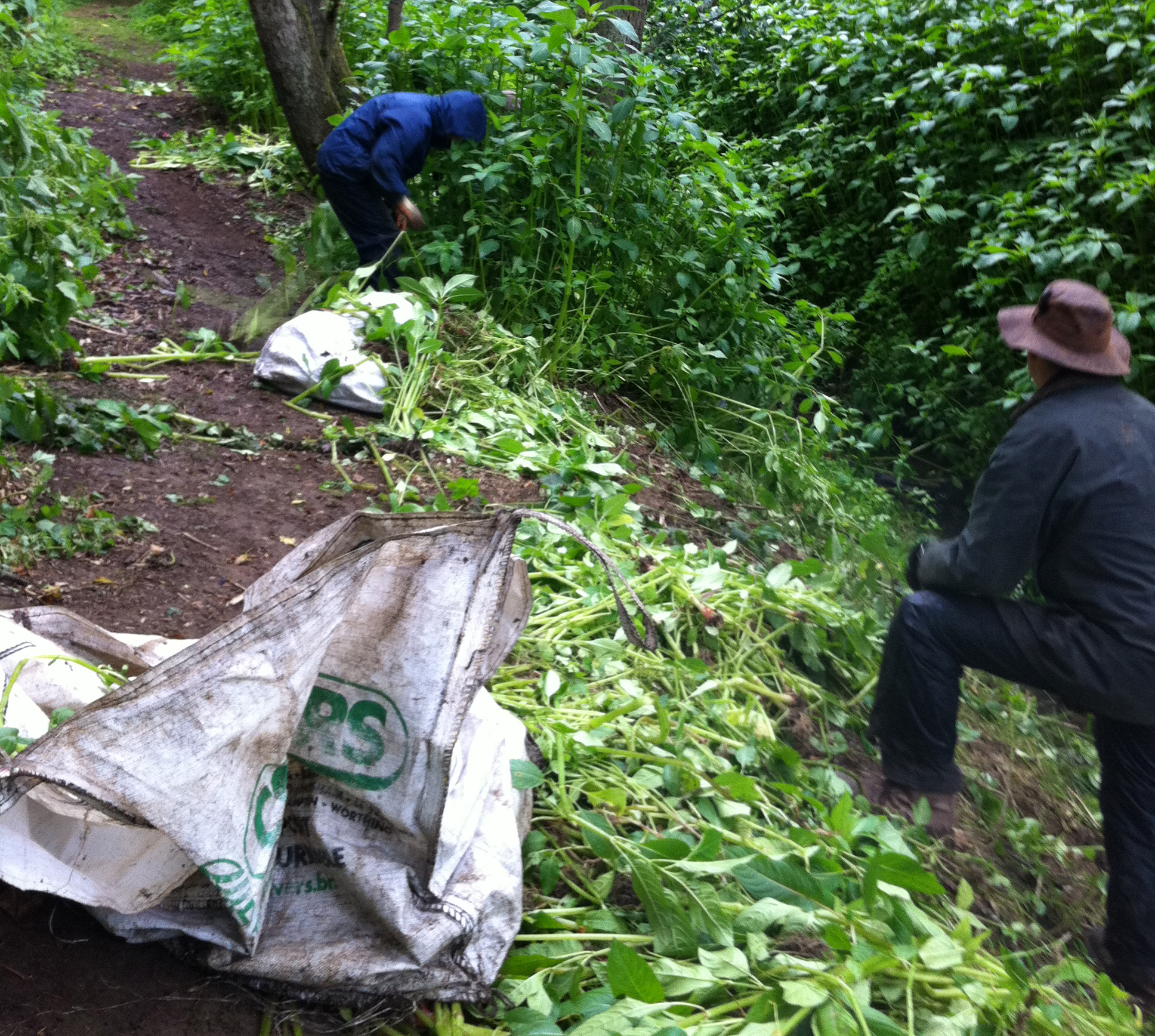Have you seen this plant?
April 6, 2018
Himalayan balsam may look pretty but it’s an invasive species which out-competes native species and, if left uncontrolled, will spread throughout our water courses and beyond. During spring and early summer National Park rangers and volunteers will be out working hard to clear it.
The impressive sounding GB Non-native Species Secretariat (NSS) describes Himalayan balsam, Impatiens glandulifera, as a ‘tall, attractive, annual herb with explosive seed heads’. It can grow to over 2m high and was introduced into the UK by the ornamental gardeners of the early 19th century at the same time as other, at-the-time exotic, species such as Japanese knotweed and giant hogweed. That’s where the problem started.
Each Himalayan balsam plant can produce up to 800 small seeds which are light enough to carry up to 7 metres on the wind as well as in the water. With their ‘exploding’ seed heads it’s not surprising that they soon made their escape out into the wild. Today the plant is widespread. In the National Park you’re likely to spot it along river and stream banks or in damp woodland.
“The wide pink, trumpet-shaped flowers – also known as ‘policeman’s helmet’, or ‘Indian balsam’ – smell sweet and are very attractive to pollinators – to the detriment of smaller native plants,” says South Downs ranger Angela Ward, who works in the Wealden Heath area of the National Park. “And, because it dies back completely, over winter the banks are left bare and more susceptible to erosion.”

Around this time of year you might spot National Park rangers and volunteer rangers out clearing Himalayan balsam – or as they put it ‘balsam bashing’. “Because seeds migrate downstream we have to begin working right at a stream’s source. This reduces the risk of plants re-colonising.”
“The clearing season only lasts a couple of months” continues Angela. “We want to get as much removed during June and July before the plants start seeding. If we pull them out when they’re in seed we risk spreading it further.
“In the longer-term the plan is to work with landowners to clear further downstream. It’s going to take some time but we’ll be back again next spring to start again.”
How to spot Himalayan balsam
Himalayan balsam is listed under Schedule 9 of the Wildlife and Countryside Act 1981 which means that it’s an offence to plant or allow it to grow in the wild. The GB Non-native species secretariat publish this useful sheet to help you identify it
It’s estimated that together invasive non-native species, such as Himalayan balsam, present a financial cost to the UK economy totalling some £2 billion. To tackle the problem the government need to determine where the plants are and you can help. Download the free PlantTracker app to easily identify and submit photos and locations of 18 invasive plant species, including Himalayan balsam.
